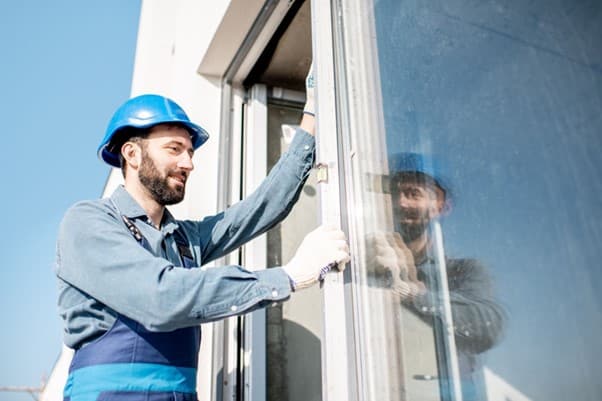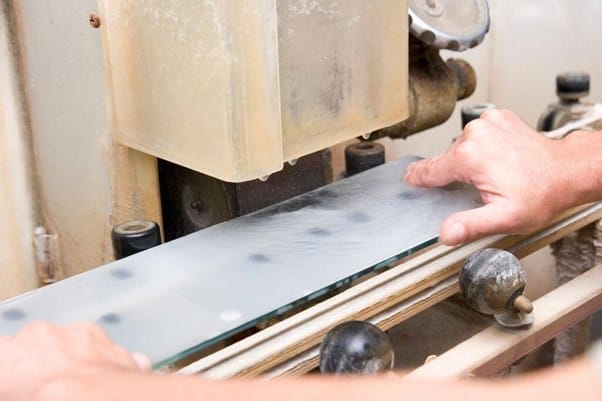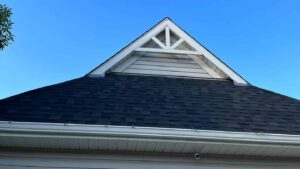You’ve just finished mounting your stunning new windows, and are now basking in the glory of natural sunlight penetrating your house. However, for all the pesky neighbours staring at your newest additions as well as unscrupulous elements trying to take a peek in, too much of ‘openness’ can get you into a problem! Incorporating privacy glass panels is the fantastic way to preserve your household’s privacy, without blocking the natural sunlight from coming into your house— the frosty panels also help integrate your windows pretty well into your home’s unique decor and style.
How to Frost a Glass?

Have you ever encountered an alluring type of glass whose texture is not entirely clear but rather somewhat hazy, rough and translucent; so much so that you are almost compelled to wipe it clean with an intent of restoring clarity? A frosted glass looks a little distinct from your conventional clear glass and finds uses in various places, thereby improving any space’s architectural appeal.
Frosted glass, in scientific jargon, is a transparent glass panel that is altered to turn opaque by using techniques of sandblasting or acid etching. The final product comes out as translucent, obstructing visibility even though it is capable of transmitting light by dispersion. This frosting effect can also be obtained by introducing a vinyl film that serves as a screen print on the glass surface, or through spraying glass frosting products.
Sandblasting

In essence, sandblasting is the procedure of spraying the glass surface with tenacity and high-pressure, which imparts it a pearlescent white appearance.
Sandblasting is a generic term used to describe the act of directing very fine bits of substance through steam or air to scrub or etch a glass surface at high speed. In a few sandblasting applications, artificial particulates or tiny bits of coconut shells are occasionally used rather than conventional sand.
The sandblasting methodology is used to distort visibility through glass, but it still transmits light through the surface, albeit dispersed. Varied shapes and patterns can be formed with sandblaster by using a mask that opposes the caustic pressure of the grit. Based on the design, the mask could be hand-cut, or machine-generated.
Acid-etching

Acid-etched glass is the term used in reference to frosted glass that is treated with hydrofluoric acid to give a frosty appearance to its surface. Whole glass sheets may be acid-etched, or tiny segments might be treated to add distinct forms.
Since the finished surface is smoother to the handle and easier to manage, acid-etching is often seen as a good option to sandblasting technique. This type of glass can endure pressure better and stay stain-free longer. Further, it can be sliced into any size or shape and then tempered— thanks to the unmatched sturdiness. The technique can be applied in variation to manage the level of opacity. It is regulated in accordance with the final product use.
How a Frosted Window Film is applied?

Before moving ahead with the Frosted glass window Film application, here are a few pointers that you need to be wary of:
- Be sure not to apply window film in intense sunlight. Also, ensure that the temperature of the window film, the window itself, and the air around ranges between 12 – 18 degrees C. We recommend you to start application during the early hours or after the sun goes down.
- Clean the windshield and the surrounding region thoroughly, including your working space. Remove all the dust particles, stones, bugs, and insects. Also closely lookout for the fingerprints on the glass and clean them before starting.
- You cannot apply the film on your own. The process will require the presence of at least two or more people for proper installation.
Frosted Film Application Guide

- Ensure to keep your frosted window film smooth and flat, so prevent the possibility of bents or folds.
- Clean the window and its surroundings thoroughly, as explained earlier before starting the installation.
- Utilize the provided squeegee and card over the application adhesive taping at the front of the film to further reinforce the bond between the two. You can make use of a smooth surface, similar to a table.
- The next step is to lift the paper protection. Be very vigilant and patient when scraping the back paper, especially when the film includes cut-outs, letters, and other components, so as not to inflict any damage. Do not rush; this is the point where the majority of mistakes happen!
- After placing it at the desired spot, apply the film to the window with the help of supplied tape.
- Make use of the supplied squeegee to cover the film— starting from the middle and moving horizontally in the overlying movements pushing towards the edge.
- Check for air trappings. On a rare occasion, if a bubble is formed between the film and the glass surface, try to gently push it out through one of the film edges (nearest ones). In case, you feel like applying the force to move the bubble forward, pinprick it, instead.
- Make sure you allow the adhesive enough time to work itself out so that the taping removal doesn’t end up in pulling off the film. We recommend letting the tape stay for at least 8 – 12 hrs before you decide to take it off; If it still seems to be pulling off the film, wait for 1 – 2 days and then remove the tape.
Frosted Window Film Benefits that make it ideal for modern interior settings
Frosted Window Films offer the easiest means to pull off Frosted glass appearance without having to buy separate glass panels that went through complex sandblasting or acid-etching procedures.
In short, Frosted film is an outstanding, dynamic, as well as cost-effective window solution for office as well as residential settings. This robust, inexpensive product enables a large deal of sunlight to come through while maintaining a high degree of privacy at the same time.
Frosted films are critical in the spaces where there are multiple and wide sized windows, as they can prevent excessive heat and glare from sunlight too. Window frosting is perfect for achieving stunning looks as well as the utility— the product is also available in a wide range of designs to choose from.









